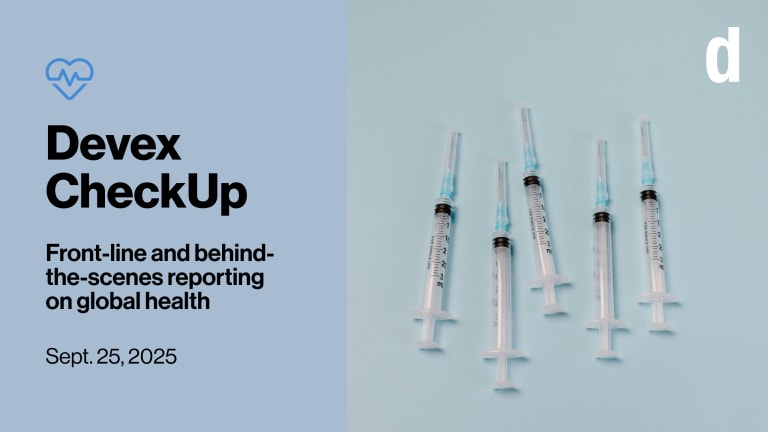
Cancer is gaining ground in the developing world.
People in poor countries are more likely to die from cancer, and die far younger, than people in rich countries. Today, on World Cancer Day, this cancer divide continues to worsen. Even as misconceptions have receded, the reality hasn’t.
There’s been political progress at the global level, including the 2011 U.N. resolution on noncommunicable diseases like cancer. Yet the traditional mode of global assistance for developing countries — aid funding — hasn’t been forthcoming. Without it, the NCD agenda has gained little traction in those countries.
Perhaps the answer isn’t countries at all.
Lagos. Jakarta. Dhaka. Bogotá. As the emerging world urbanizes, cities like these will be the front lines of the global cancer response. Closing the cancer divide will take fast, innovative and effective action — the type cities are built to deliver.
Cities’ cancer challenge
“Developing world problem” increasingly means “urban problem.” Today, 30 percent of people in developing countries live in cities; by 2050, 57 percent will. In Africa and Asia, by 2050, rural populations will have declined. In those modernizing regions, the population growth of 2.5 billion will be entirely urban.
Thus, the proportion of cancer cases occurring in emerging-world cities will continue to grow.
Developing countries already bear 80 percent of the global cancer burden: You’re not only more likely to get cancer, but more likely to die from it. Women in the poorest countries are 12 times more likely to die from cervical cancer compared with women in the richest countries.
City living itself exacerbates cancer risk through pollution, poor diets and a sedentary lifestyle. Overweight and obesity already affect 20 percent to 50 percent of city dwellers — especially women — in Africa and increase the risk of cancer. The developed world has exported its risky lifestyles to emerging world cities, where clinics and hospitals are less equipped to deal with the consequences.
Tomorrow’s cancer laboratories
Fortunately, cities are uniquely adept at solving public health problems. They enjoy important advantages compared with their national contexts.
First, cities are densely populated. Crowding creates some health problems, such as sanitation risks and higher rates of violence, but makes cities easier settings in which to operate public health programs. Services can reach more people, more quickly, than anywhere else.
For cancer, early points of contact with the health system are particularly important: awareness and early screening can avert costly treatment and save lives. Cities have got plenty of models for effective behavior change and case detection programs. From HIV prevention among sex workers in Bangkok, Thailand, to tuberculosis control in Cape Town, South Africa, past experiences can inform urban initiatives for cancer prevention.
Emerging-world cities can draw from existing models for addressing risk factors like tobacco and diet, such as former New York City Mayor Michael Bloomberg’s signature New York City health reforms. Smart urban planning can create cities that mitigate cancer-causing pollution and encourage exercise. And cities’ intellectual energy will spur new solutions.
Second, it’s easier for a city government to disrupt the status quo. Bloomberg’s initiatives were far ahead of public opinion in most of the United States when he enacted them. They required action across multiple government agencies. They were politically risky.
A minister of health — no matter how visionary and committed — would have struggled to surmount any of those obstacles. Most ministers serve under two years and face pressure to deliver popular results fast. To collaborate with other government agencies, as is necessary for NCD progress, ministers must persuade — they can’t dictate.
Mayors, on the other hand, enjoy longer terms and executive authority across sectors. This dynamic makes cities important laboratories for forward-looking, potentially controversial policies — just the kind we’ll need to close the cancer divide. Mexico City, for example, enacted tough smoking bans in 2008, just as national colleagues adopted more limited measures.
Emerging world cities’ third advantage is financial. Progress requires resources. While development assistance hasn’t confronted NCDs head-on — around 1% of donor funds went toward NCDs in 2011 — and countries have acted slowly, many cities could find the fiscal space for fighting cancer.
Emerging-world cities outpace national rates of productivity, often serving as economic engines. They could capture and deploy more tax revenue — their commonly ineffective tax systems are both a shortcoming and an opportunity — and harness much-needed funds and innovation from the private sector. Many large industries operate in cities and surrounding areas. Cancers and other NCDs among employees are bad for their bottom line, creating an incentive for corporations to chip in. Corporate collaboration on cancer prevention and early detection, in the workplace and beyond, could help supplement public sector programs aimed at the worst-off.
Philanthropies are another natural partner for urban cancer initiatives. While scientific laboratories pursue medical cures, urban “labs” will generate their own breakthroughs. Foundations aim to catalyze exactly the sort of innovative programs that can make a splash in one setting and translate into many others.
New investments from international partners will pay off, not just with stronger markets for goods and more stable societies, but with tested strategies that’ll work in New York, London and Tokyo. Those results could help increase political commitment from traditional development agencies.
Innovating against cancer
Cancer isn’t just an urban issue. Most of the world’s poor still live in rural communities. National governments and development groups should expand their programs to bring the cancer response to these areas, too. Universal health coverage policies could help finance and reorganize services to address NCDs.
Emerging world cities, however, have no need to wait — they can go fast and far on their own. Their leadership can begin to close the cancer divide.
Caitlin Gillespie and Anna Tanasijevic contributed to this piece.
Join the Devex community and access more in-depth analysis, breaking news and business advice — and a host of other services — on international development, humanitarian aid and global health.









